The Beneteau Flyer 7 SpaceDeck is the open cockpit version, as opposed to the SunDeck variant. We tested it in the fishing trim, with a 150 hp Suzuki outboard.
At 6.41 meters in length, the new Beneteau Flyer 7 SpaceDeck is on the small side of the outboard daycruisers built by the French group.
It manages to feature remarkable performances and boasts a fair amount of modularity and versatility.
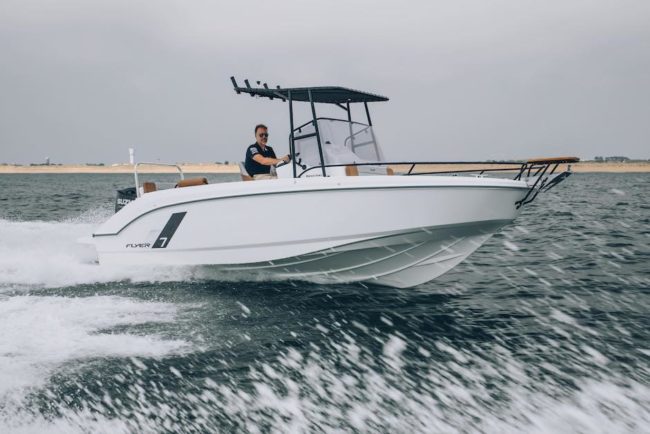
The Beneteau Flyer 7 SpaceDeck of our test is configured with the fishing gear and the cushions of the Elegance version
It’s four of us on board, but before the test I proceed with a walkthrough of thisFlyer 7 SpaceDeck. Access from the dock happens only to portside, through a small passageway that connects the aft platform to the cockpit. The two swim platforms are made of two fiberglass elements applied to the hull, and there’s also a mount for water skiing.
A convertible cockpit for relax and fishing
The cockpit area is totally free, as befits an angler, but if necessary it is possible to flip down the two benches on the sides and, in addition, there a further seat abaft. Behind us there’s the live well with access from above. On the flooring, a locker provides stowage space and a metal mount supports the removable table, so to transform the same area into a living and dinette for up to 8 people: in addition to the aft seats, the two piloting seats can be rotated 180 degrees.
The dashboard of the Beneteau Flyer 7 SpaceDeck is slightly moved to starboard and leaves ample space for the electronic displays; in our case there is a Garmin multifunction screen and the Suzuki gauge that constantly monitors the state of the engine. A little further down there is a row of switch buttons to activate the onboard systems. A small but comfortable step at the base of the console offers better support when piloting.
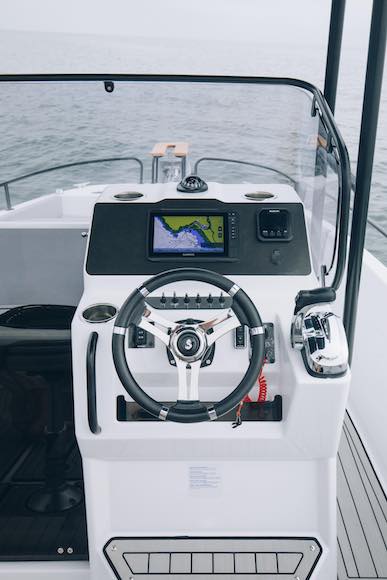
Talking of the console, it also contains a stowage compartment whose companion’s size is adequate for the passage of a person, so that the space can also be used as a dressing room / heads.
The whole area is protected by a T-Top with fabric awning and four rod holders for trolling.

Three possible bow configurations. You pick!
Another expression of versatility on the Beneteau Flyer 7 SpaceDeck is the fore area, which offers three types of configuration. Starting from the the two side seats with lockers and the sofa facing the console, you can have a lounge for conversation or relax, or arrange the table in the center to get a dinette or, again, cover the walkway with the supports and get a single, large sundeck.
The side handrail always provides a valid support, while the bow anchor roller is practical as it allows to easily maneuver and to check if there’s any issue with the anchor or the chain.
A nice extra touch on Flyer 7 is the wooden pulpit for a comfortable way in and out when the boat is moored to bow.
Having a fishing vocation, this SpaceDeck misses padded supports for the knees along the inside perimeter: on a fishing boat each point can be useful for a catch. I would have liked also the supports to house the rods at rest.
And now the test
Slightly cloudy skies and rising wind create short waves: these are the weather conditions at the time of my test. Our Beneteau Flyer 7 SpaceDeck boasts a Suzuki DF150 AP on the transom.
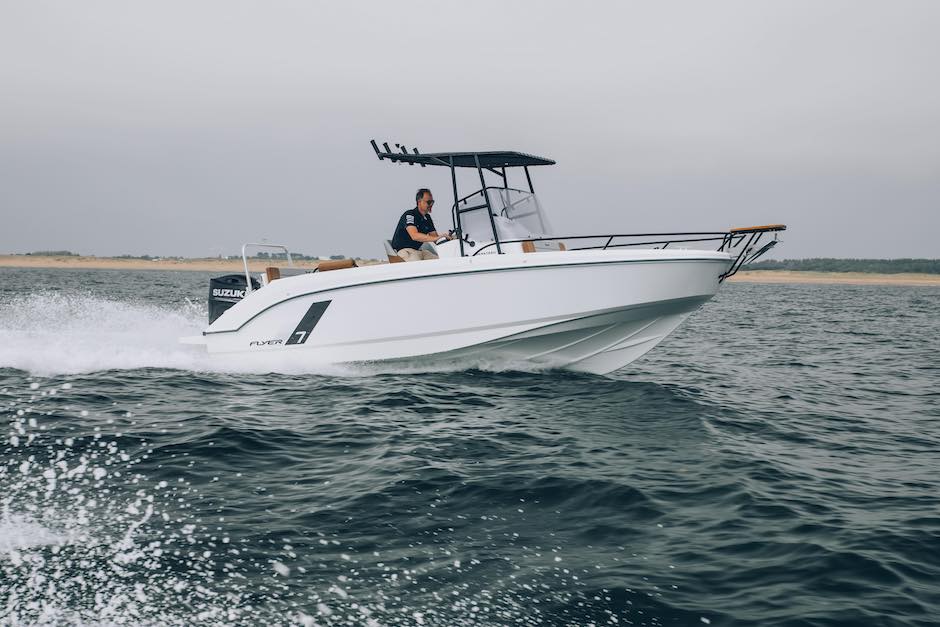
We leave the marina with 100% fuel (170 liters), but no fresh water in the 50-liter tank. At idle we move at 2.6 knots, 650 rpm. The rising wind begins to create some discomfort, so I immediately find the minimum planing: at 4000 rpm we burn 24 liters per hour for a speed of 13.2 knots. Another 500 rpm step up, and we touch 20.5 knots, an economic cruising speed.
At this speed actually the boat moves well on the short wave, although sometimes a stiff impact comes from the hull. The feeling of solidity is there, only weakened by the T-Top on our model, as it generates an annoying squeak because it is not perfectly fixed.
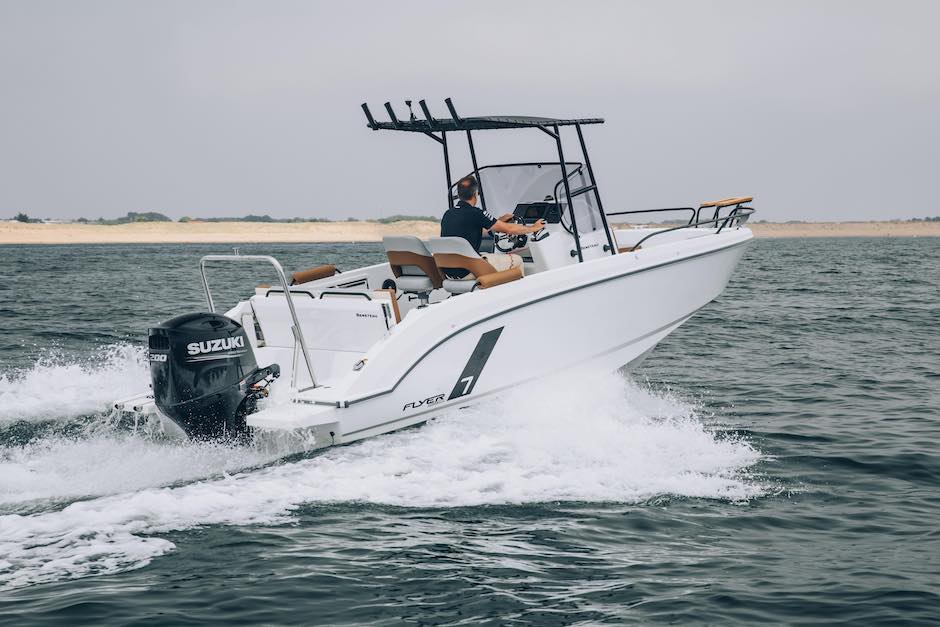
Talking of top speed, I reckon a range of different possibilities. In this tes, with four people on board, full fuel tank, no water, and chopped water, I reached 28.2 knots at 5400 rpm with a fuel consumption of 46 lph, but further raising the trim I was able to touch 30.4 knots burning only an extra 1.7 lph.
However, the Garmin display shows in its history a record speed of 37.9 knots, and the captain of the Boatyard explains that it was achieved with one person on board and calm seas.
It would have been interesting to test the Flyer 7 even with the most powerful engine available, 200 hp, to be able to evaluate how far the maximum speed is from 37.9 knots, in these very same conditions. In any case, I appreciate the choice not to allow too much power, in contrast with current fads.
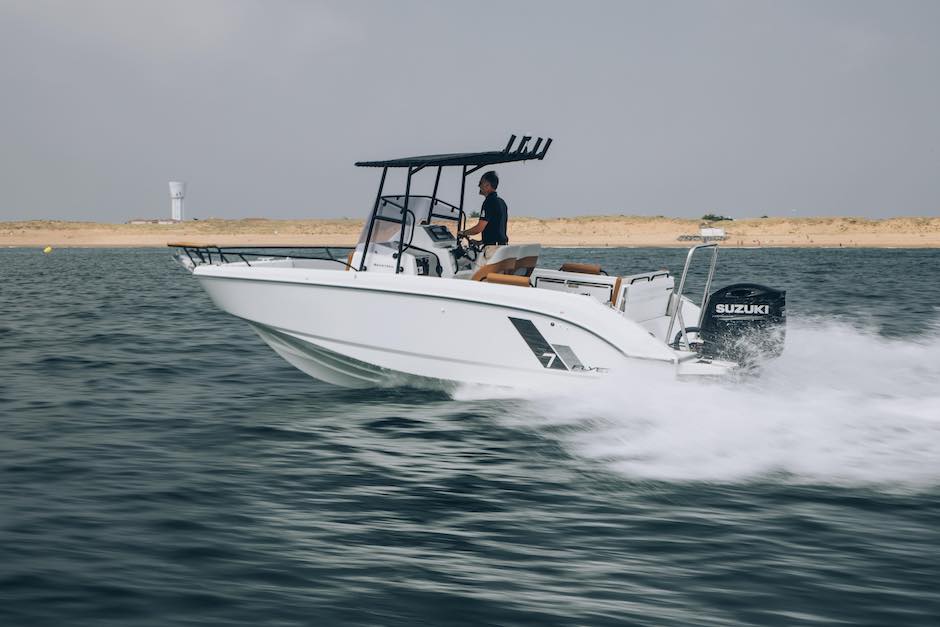
The Suzuki DF150 AP, however, gives us a demonstration of strength, thanks to the variable timing system (VVT) which provides high torque at low and medium revs, making the boat plane from a standstill in just 4.7 seconds and reach 20 knots in just 7.1 seconds. Getting to the top speed takes an additional 13 seconds.
Developed with Raceix, Beneteau BoatingOS aims to be a game changer
Beneteau Flyer 10 on test: the day cruiser goes “extra large”
Turns at cruising speed are carried out with a good balance and no excessive roll. The quietness of the engine is the one to which Suzuki Marine has accustomed us, and only the wind bothers us as we speak on board, but whoever is at the helm is well protected by the windshield.
Final conclusions
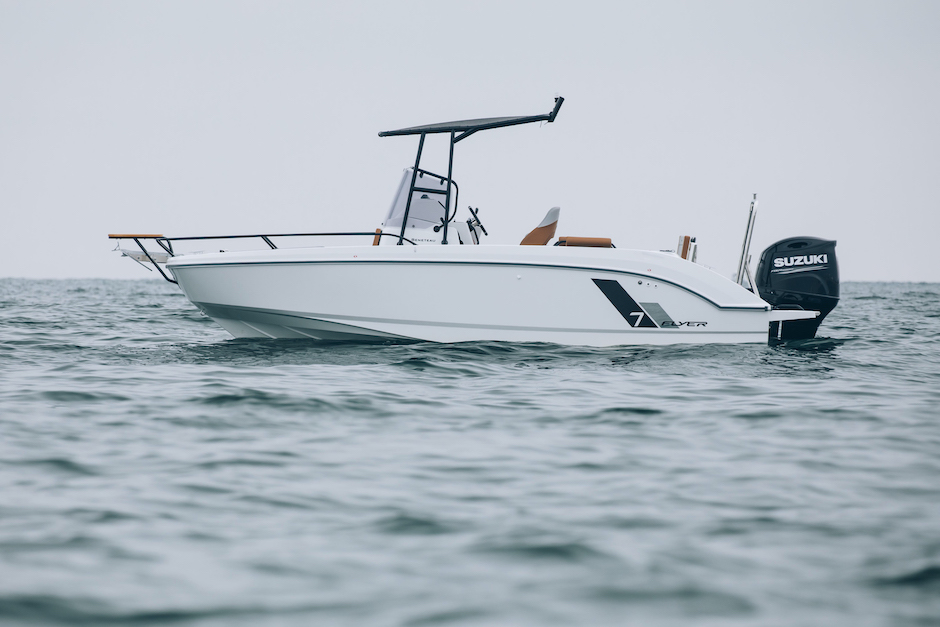
I recommend the Beneteau Flyer 7 SpaceDeck to those who like to go out with their family in relax, and at the same time spend some time fishing. I really liked the balance of the design, in order to offer both movement space and support solutions with seats and sundecks that can be obtained by adding some modules. In this way, passengers can choose in an instant the set-up solution they prefer during the day.
My curiosity is for a second test, with more ponies at the stern, but this is not a sport boat so I fully agree with the choice to power the Flyer 7 Spacedeck with a 150 hp unit carrying all the support and reliability of the Suzuki brand.
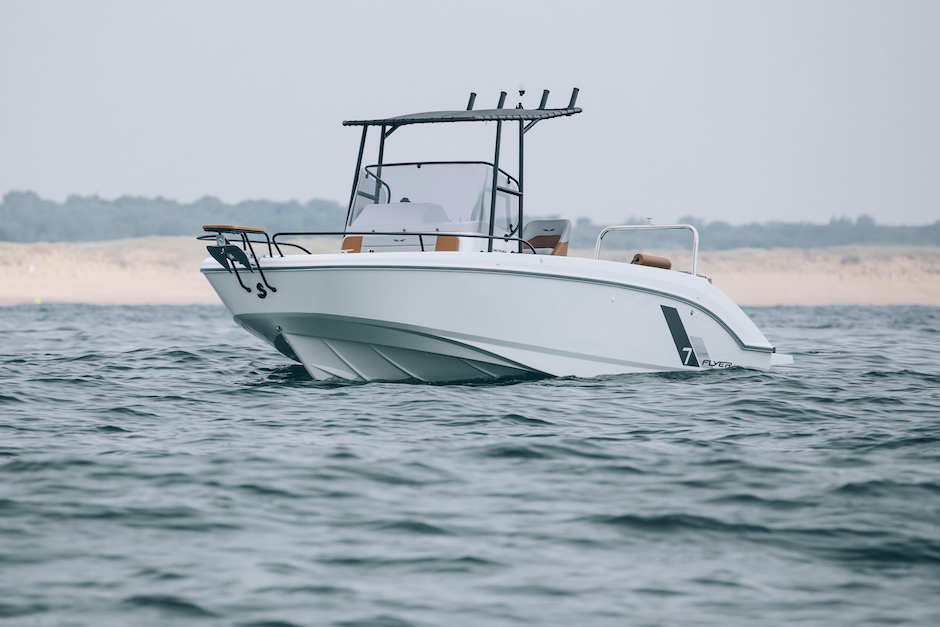
The numbers of Beneteau Flyer 7 SpaceDeck
- Length overall …………… 6.41 m (21 ft)
- Length LH …………… 6.12 m (20ft 1in)
- Beam …………… 2.45 m (8 ft)
- Dry displacement …………… 1473 Kg
- Fuel tank …………… 170 l (45 US gal)
- Fresh water tank …………… 50 l (13 US gal)
- Minimum output …………… 1×150 hp
- Maximum output …………… 1×200 hp
- Passengers …………… 8 / 9
- CE design category …………… C / D
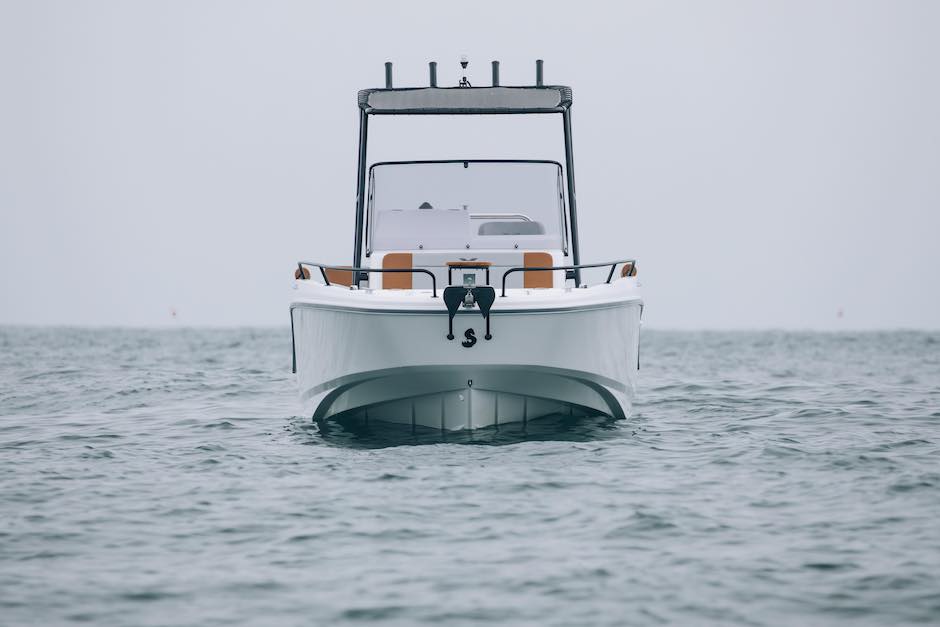
Test readings
rpm knots mph lph nm/l range (20% reserve)
- 650 2,6 3,0 1,3 2,00 272
- 1000 3,8 4,4 2,8 1,36 185
- 1500 5,3 6,1 5 1,06 144
- 2000 6,5 7,5 7,4 0,88 119
- 2400 7,6 8,7 10 0,76 103
- 3000 8,2 9,4 14,2 0,58 79
- 3500 9,2 10,6 19 0,48 66
- 4000 13,2 15,2 24 0,55 75
- 4500 20,5 23,6 29 0,71 96
- 5000 25,3 29,1 38,8 0,65 89
- 5400 28,2 32,5 46 0,61 83
- 5800 30,4 35,0 47,7 0,64 87
- Acceleration from standstill to planing …… 4.79 s
- Acceleration 0-20 kn …… 7.10 s
- Acceleration 0-28.2 kn …… 20.8 s
Test conditions
Chopped sea, 4 passengers, clean hull, 100% fuel, no fresh water
Indicative prices (VAT not included)
- Boat …………… from € 21.400
- Suzuki DF150 AP …………… from € 14.300
- Suzuki DF200 AP …………… from € 17.200

(Italian text by Carlo Luongo)
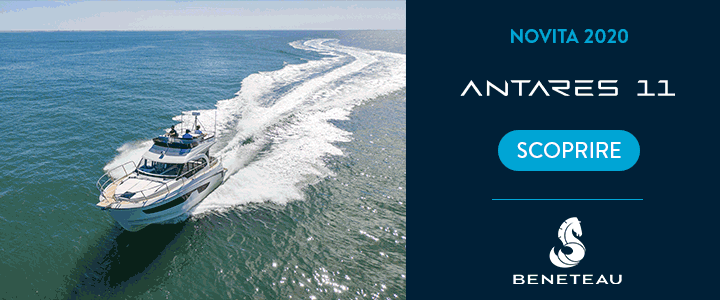

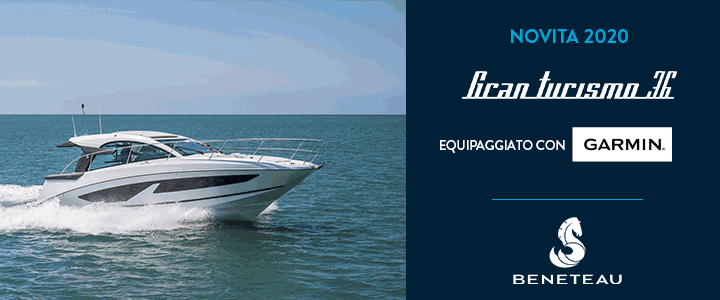
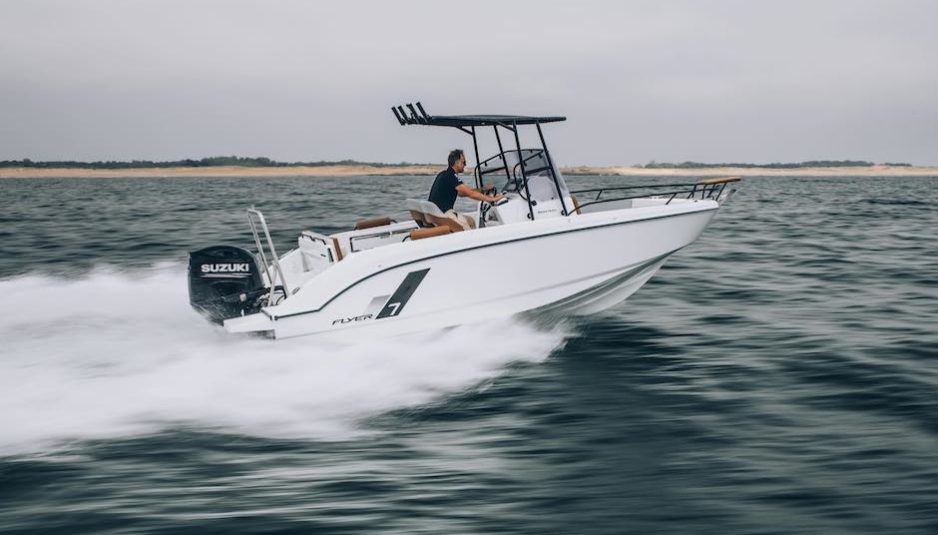
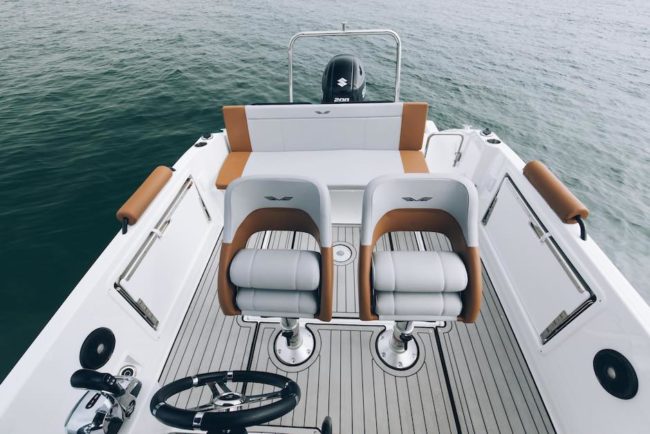
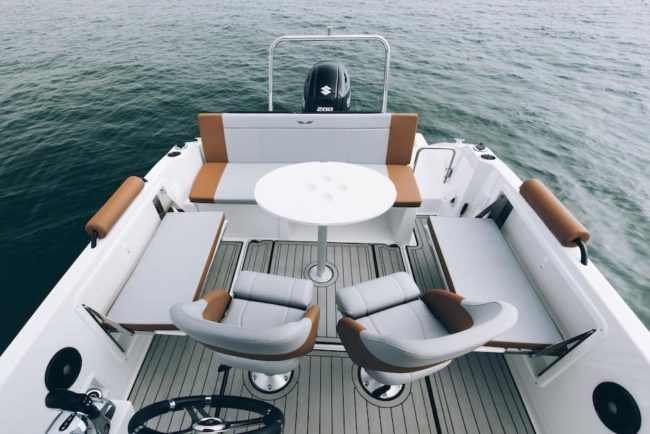
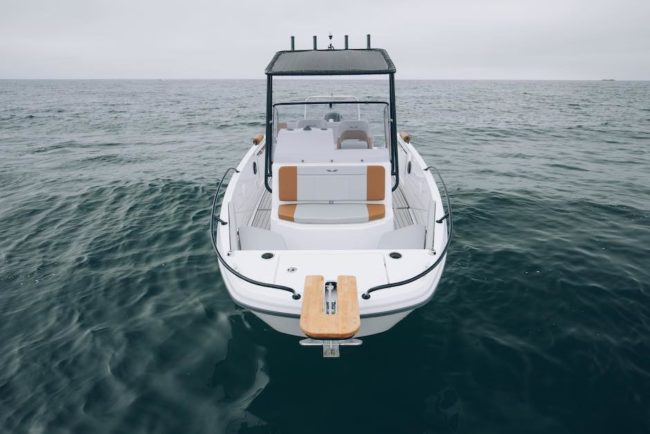
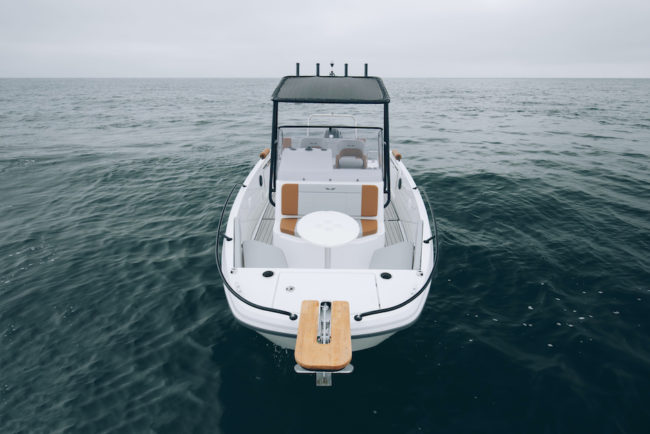
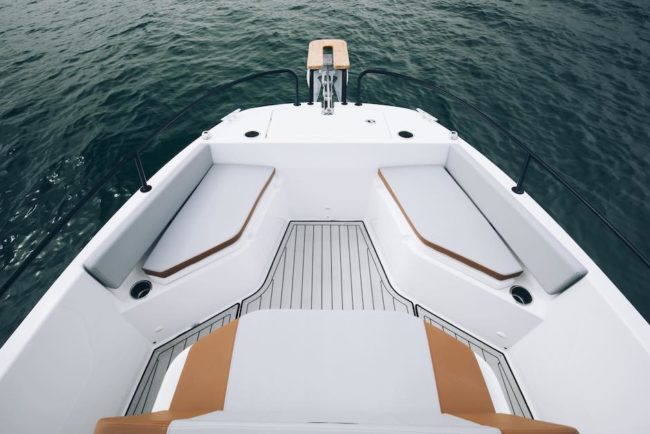
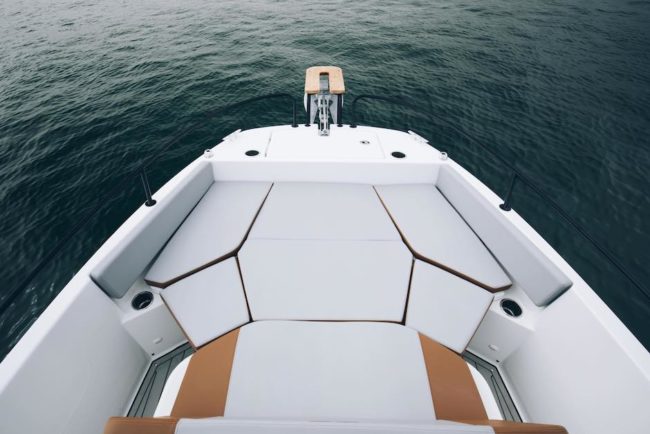
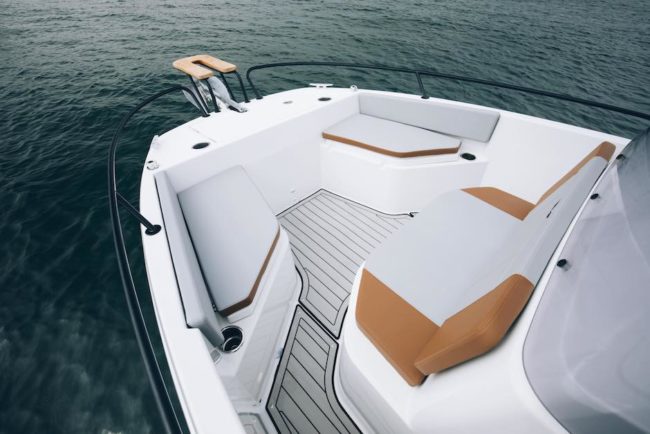
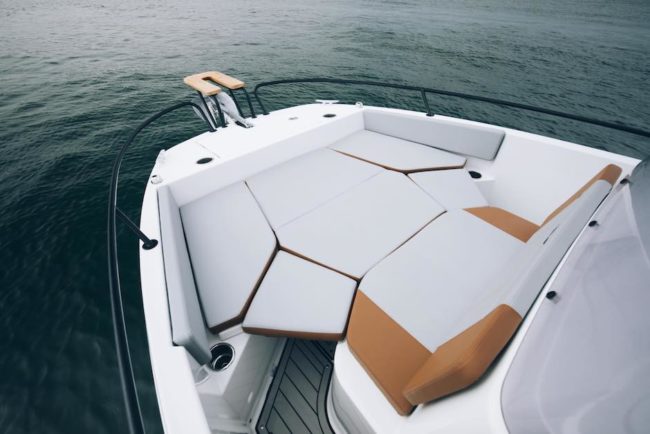
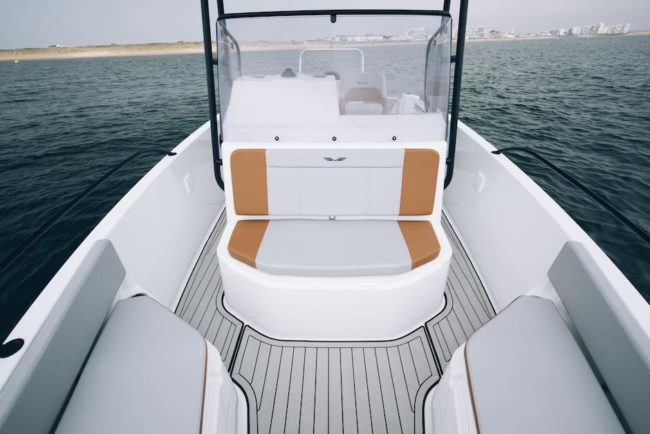
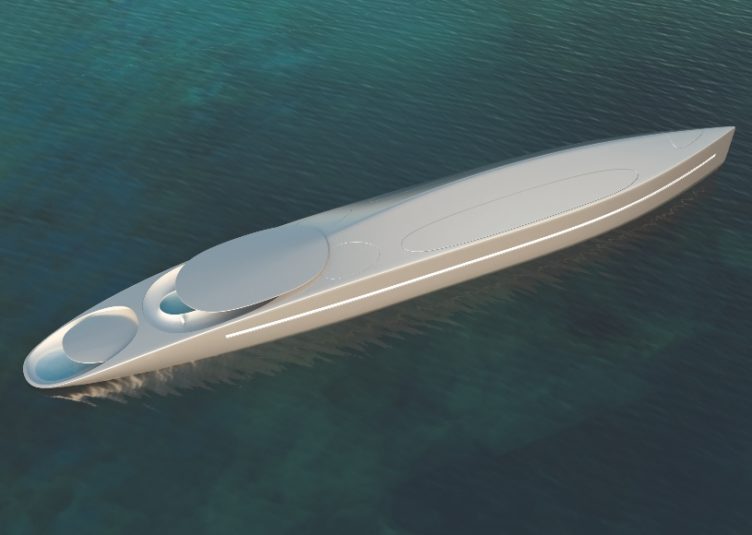
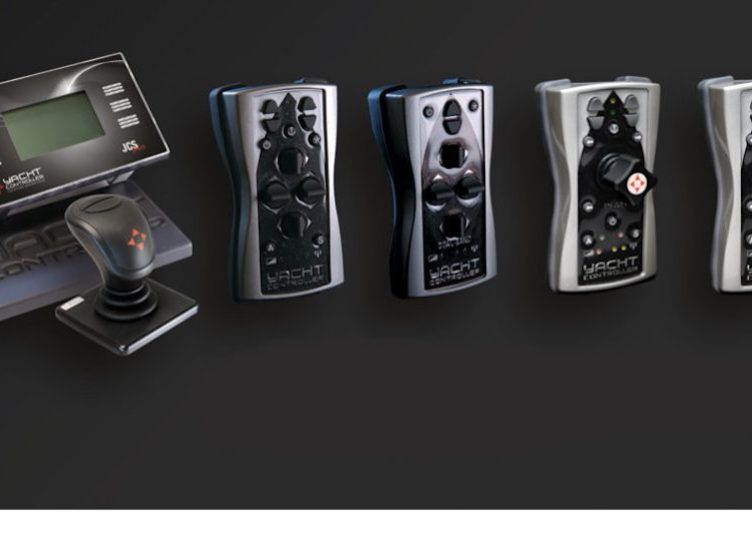
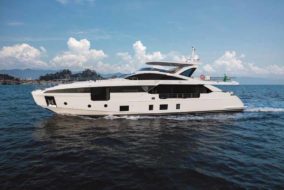

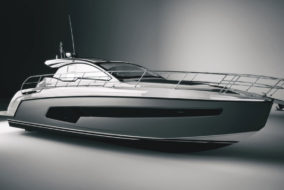
Follow Us
1251 Fans